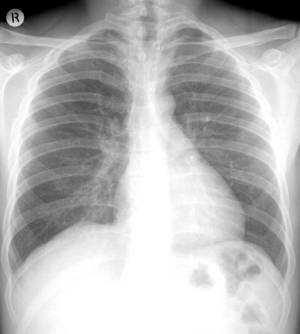 The mortality benefits of restricting the use of asbestos should begin to appear after 2010, when deaths from malignant mesothelioma are expected to peak, according to a report from the CDC.
The mortality benefits of restricting the use of asbestos should begin to appear after 2010, when deaths from malignant mesothelioma are expected to peak, according to a report from the CDC.
The number of malignant mesothelioma deaths increased from 2,482 in 1999 to 2,704 in 2005, Ki Moon Bang, Ph.D., of the National Institute for Occupational Safety and Health (NIOSH), and colleagues reported in the April 24 issue of Morbidity and Mortality Weekly Report.
However, annual mortality remained stable at 14 deaths per 1 million in 2005, compared with 14.1 per 1 million in 1999. The rate for the entire study period was 13.8 per 1 million.
“Because mesothelioma manifests 20 to 40 years after first exposure, the number of mesothelioma deaths will likely peak by 2010,” the authors wrote.
Although the health threat posed by asbestos has decreased, it has not disappeared, they emphasized. Asbestos continues to be imported legally for use in certain construction and transportation products.
Moreover, carbon nanotubes used increasingly in manufacturing may share the same carcinogenic potential attributed to asbestos in mesothelioma.
In 1975 the Environmental Protection Agency banned the use of asbestos in most types of residential and commercial insulation materials. In 1989 the EPA attempted to implement a total ban on the use of asbestos. The ban was overturned on appeal in federal court in 1991.
Since then, the EPA has taken the position that only certain types of products have been exempted from the ban.
Nonetheless, “an estimated 1.3 million construction and general industry workers potentially are being exposed to asbestos,” the authors wrote.
To characterize recent trends in mesothelioma deaths, NIOSH investigators analyzed multiple cause-of-death datasets and determined that 18,068 people died of malignant mesothelioma from 1999 to 2005.
Men accounted for 80.8% of the deaths and whites for 95.1%.
Mesothelioma mortality risk increased with age — 311 deaths involved people younger than 45 compared with 8,858 deaths in the 75 and older age group.
The authors reported that 26 states had mesothelioma death rates that exceeded the national average, including six states that had death rates >20 per 1 million or greater: Maine (27.5), Wyoming (22.2), West Virginia (21.0), Pennsylvania (20.8), New Jersey (20.2), and Washington (20.1).
The Occupational Safety and Health Administration (OSHA) established a workplace permissible exposure limit (PEL) for asbestos in 1971. As recently as 2003, 20% of air samples in the construction industry exceeded the PEL.
Mesothelioma mortality is not expected to return to background levels for another 50 years.
“Ensuring a future decrease in mesothelioma morality requires meticulous control of exposures to asbestos and other materials that might cause mesothelioma,” the authors concluded.
This article can be found HERE
